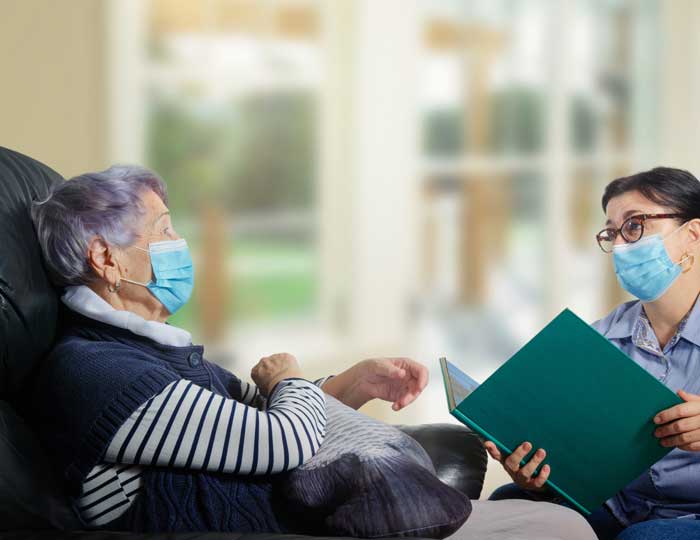
MAAA provides funding to 16 metro area community organizations that provide services and supports for caregivers to older adults. These services took an abrupt turn in March to protect community members from COVID-19.
We surveyed our provider partners to learn about the changes they have made and the needs and stresses they seeing among caregivers. This is some of what we learned.
How have services changed?
In-person services such as support groups and one-to-one coaching ceased as a result of COVID. Instead, organizations are providing Telephone Reassurance to caregivers and Zoom support groups and information sessions. Some also offer eRespite—dynamic, stimulating online activities that engage the individual with dementia and provide the caregiver a break away from their care role.
“I believe the interaction my wife has with the Lyngblomsten eRespite group is more meaningful than any other interactions, including with her best friends. Today I got the dishes done, threw away a bunch of clutter, got a stain off the car seat and enjoyed a cup of hot water with my feet up in my recliner. Thank you!”
—John R., Caregiver
“We have a partnership with Black Nurses Rock to regularly check on elders that are dealing with complex chronic health disease, as many elders are reluctant to seek medical attention as needed.”
—Volunteers of America, Culturally Responsive
Caregiver Support and Dementia Services
“We were able to purchase and distribute iPads to families. That has played a critical role in assuring that our caregivers and elders can continue to receive support from Wise Elders Families staff and participate in programming virtually.”
—Centro Tyrone Guzman
What gaps do you see in caregiver support?
Caregiving is a family affair, and COVID-19 has put significant restraints on family members and friends being a part of a care team. Even when they can be present, a lack of specific direction and empowerment that often comes from supporting organizations is missing.
Medical providers are key players in getting caregiver support to people who need it. They need up to date information on services available so they can refer people to community supports before a health crisis. Limits on out-of-home respite services, including adult day services, has created a greater sense of social isolation both for those being cared for and caregivers.
“Most caregivers in our communities have language barriers, and they cannot read the documents they receive from public institutions. To help them, they must take pictures of the documents and send them to us via text which they have little to no experience with. They often must wait for their children or relatives to return home in order to send the message. These services would easily be taken care of in person pre-COVID.”
—CAPI USA which serves immigrants, refugees and others with basic needs
“Technology remains a barrier to getting needed services. Some caregivers are not comfortable with computers, tablets or navigating any type of remote device and, in this environment, that is making services inaccessible.”
—Volunteers of America, CULTURALLY RESPONSIVE
CAREGIVER SUPPORT AND DEMENTIA SERVICES
“One of the biggest gaps we have seen in meeting caregiver needs is the lack of options for respite care for Spanish-speaking caregivers. Many caregivers have very limited support networks in Minnesota, and there are very few Spanish-speaking respite volunteers.”
—Centro Tyrone Guzman
What are you hearing from caregivers as points of stress in their lives?
- Balancing working from home as they shoulder more caregiving responsibilities with long periods with the care receiver.
- Staying well enough that don’t need to see a doctor or require medical procedures.
- Feeling overwhelmed with new ways of having to advocate for themselves and the person for which they are caring.
- Greater isolation from adult children, grandchildren and friends due to social distancing recommendations.
- Increased burden as dementia seems to progress at a greater pace due to complications created by COVID.
- Due to the lack of options for respite, caregivers are expressing they don’t get a break and are feeling like they have no option but to place their care partner into memory care/long term care. This transition is made more challenging due to COVID-19 restrictions with visiting.
Thank you to the contributors to this article:
Lyngblomsten Community Services
CAPI USA
Centro Tyrone Guzman
Volunteers of America Minnesota and Wisconsin



